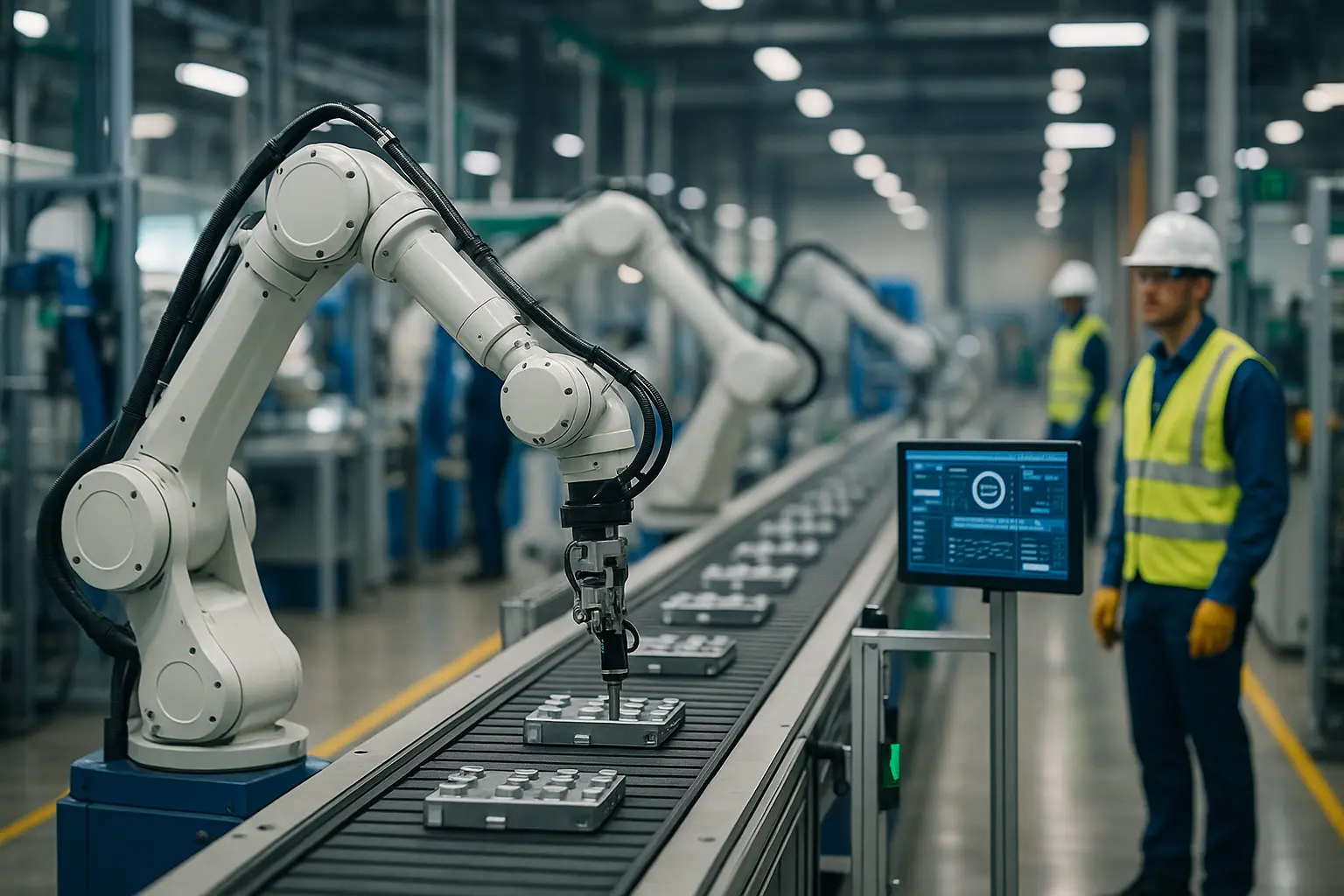In a world where efficiency is the lifeblood of manufacturing, embracing processes that minimize waste and maximize value is crucial. Lean Manufacturing is not just a buzzword; it’s a paradigm shift that streamlines production and optimizes value delivery to the customer. As industries evolve, so must our approach to inventory and management. This article delves into the core principles of lean manufacturing and how they redefine our understanding of production and quality. We aim to equip you with the knowledge to apply these principles, ensuring you stay ahead in a fast-changing world.
Understanding Lean Manufacturing
Lean manufacturing isn’t about cutting corners; it’s about creating more value with fewer resources by optimizing the production process and eliminating waste. In today’s marketplace, where customer demand shifts rapidly, adapting to these changes efficiently is critical.
Origin and Evolution
Born from the Toyota Production System, lean manufacturing was designed to address the inefficiencies in the traditional manufacturing model. Toyota revolutionized the industry by focusing on continuous improvement and quality enhancement.
Core Principles
The principles of lean manufacturing can be distilled into a few core ideas:
- Value Identification: Determine what adds value from the customer’s perspective.
- Value Stream Mapping: Analyze the flow of materials and information to identify waste.
- Flow: Ensure that production steps flow smoothly without disruption.
- Pull: Products should be produced based on customer demand.
- Perfection: Strive for continuous improvement by regularly assessing and refining processes.
The Lean Impact
Implementing lean principles has a transformative impact. Businesses can see significant cost reductions, improved efficiency, and higher customer satisfaction. Lean is not just about methodology; it requires a cultural shift towards continuous improvement and quality.
Eliminating Waste: The Heart of Lean
At the heart of lean manufacturing lies the relentless pursuit of waste elimination. Waste, in this context, refers to any activity that does not add value to the customer. There are seven primary types of waste that lean manufacturing targets:
- Overproduction: Producing more than is needed, leading to excess inventory.
- Waiting: Downtime caused by delays in the production process.
- Transport: Unnecessary movement of materials, which adds no value.
- Overprocessing: Performing more work than necessary.
- Excess Inventory: Holding more stock than required, tying up capital.
- Defects: Errors that require rework or replacement.
- Motion: Inefficient movement of workers or machinery.
Addressing Waste
To tackle these wastes, businesses often employ tools like 5S, which stands for Sort, Set in order, Shine, Standardize, and Sustain. These steps help create a clean, organized work environment that supports efficient processes.
Data-Driven Decisions
Utilizing data effectively ensures that waste elimination efforts are measured and refined. Collecting and analyzing data from every stage of the production process allows for informed decision-making and targeted improvements.
In the lean context, eliminating waste is not a one-time effort but a continuous journey. It’s about fostering an organizational culture that always seeks to do better.
Boosting Value with Lean Principles
Boosting value is at the core of lean manufacturing. By focusing on processes that directly enhance the customer experience, businesses can deliver superior products and services.
Value Stream Mapping
This involves creating a visual representation of the entire production process, allowing you to see where value is added and where waste occurs. This clarity is vital for streamlining operations.
Pull-Based Production
Instead of producing goods based on forecasts, lean manufacturing encourages a pull-based approach. This means goods are produced as needed, reducing excess inventory and aligning production with actual customer demand.
Standardized Work
Uniformity in procedures ensures consistent quality and efficiency. By standardizing tasks, you can minimize errors and optimize time management.
Quality at the Source
Emphasizing quality from the outset prevents defects and the associated costs of rework. Lean encourages empowering employees to identify and resolve issues directly at the source.
Continuous Improvement Culture
A commitment to ongoing improvement is essential in lean manufacturing. By fostering a culture that values innovation and encourages employees to voice suggestions for enhancements, organizations can continuously elevate their processes and outcomes.
The Human Element: Cultivating a Lean Mindset
While the principles and tools of lean manufacturing are crucial, the true essence lies in the people who drive these processes. Cultivating a lean mindset across all levels of an organization is imperative for success.
Empowering People
Lean manufacturing thrives on the active involvement and engagement of employees. By encouraging individuals to take ownership of their roles, you can foster an environment where everyone contributes to improvement and efficiency.
Leadership Commitment
Effective leadership that champions lean principles is vital. Leaders must model the behaviors and values they wish to see and provide the necessary resources and support to drive the lean transformation.
Training and Development
Ongoing education and skill enhancement are essential. Equipping employees with the knowledge and tools needed to identify and address waste empowers them to be proactive problem solvers.
Communication and Collaboration
Open lines of communication and a collaborative culture are crucial. Sharing insights, successes, and challenges helps build a unified team focused on achieving lean excellence.
By investing in the human element, organizations can ensure that lean practices are not just implemented but embraced as a natural way of working.
Adopting lean manufacturing principles is more than a strategic choice; it’s a pathway to thriving in an ever-evolving marketplace. By focusing on eliminating waste and enhancing customer value, organizations can significantly boost their efficiency and competitiveness. Lean is not a static model but a dynamic journey that requires cultural commitment and continuous refinement. As you embrace these principles, remember that the ultimate goal is not just incremental improvement but transformation that benefits not only the business but also its customers and employees.
FAQ
What is Lean Manufacturing?
Lean Manufacturing is a systematic approach to identifying and eliminating waste within a manufacturing process, thereby increasing efficiency and adding value to the end product.
What are the key principles of Lean Manufacturing?
The core principles include identifying value from the customer’s perspective, mapping the value stream, creating a smooth flow of products, establishing a pull-based production system, and pursuing perfection by continuously improving processes.
How does Lean Manufacturing help in reducing waste?
Lean Manufacturing helps in reducing waste by systematically identifying non-value-added activities in the production process, which can include overproduction, waiting times, excess inventory, and unnecessary transportation, among others.
Can Lean Manufacturing be applied to industries outside of traditional manufacturing?
Yes, Lean principles can be applied to various sectors such as healthcare, software development, and service industries, as it focuses on improving processes and enhancing value for the customer.
What challenges might a company face when implementing Lean Manufacturing?
Challenges can include resistance to change from employees, initial costs associated with training and restructuring, and the need for a cultural shift towards continuous improvement and team collaboration.


